Klaus Eyholzer doesn’t have far to go when the dew on his saffron flowers evaporates with the first rays of sunlight. He lives in the Swiss canton of Valais and grows the precious spice plants in his home garden. The southern slopes below the small village of Mund, high on the southern slopes of the Rhône Valley, are considered by connoisseurs to be the best growing area for the demanding crocus plants.
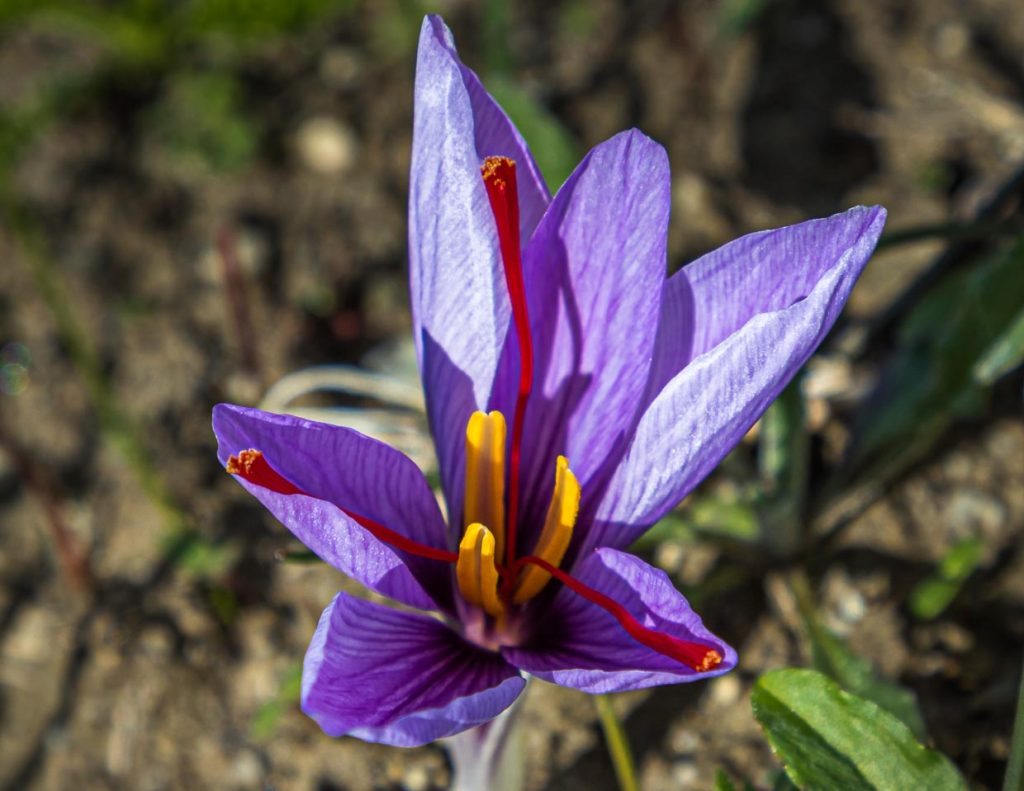
Botanically, the saffron plant belongs to the irises. Each flower has six purple petals and usually three stigmas. Only these are dried after harvesting and traded as a spice. 130,000 blossoms have to be harvested by hand for one kilogram of this culinary treasure.
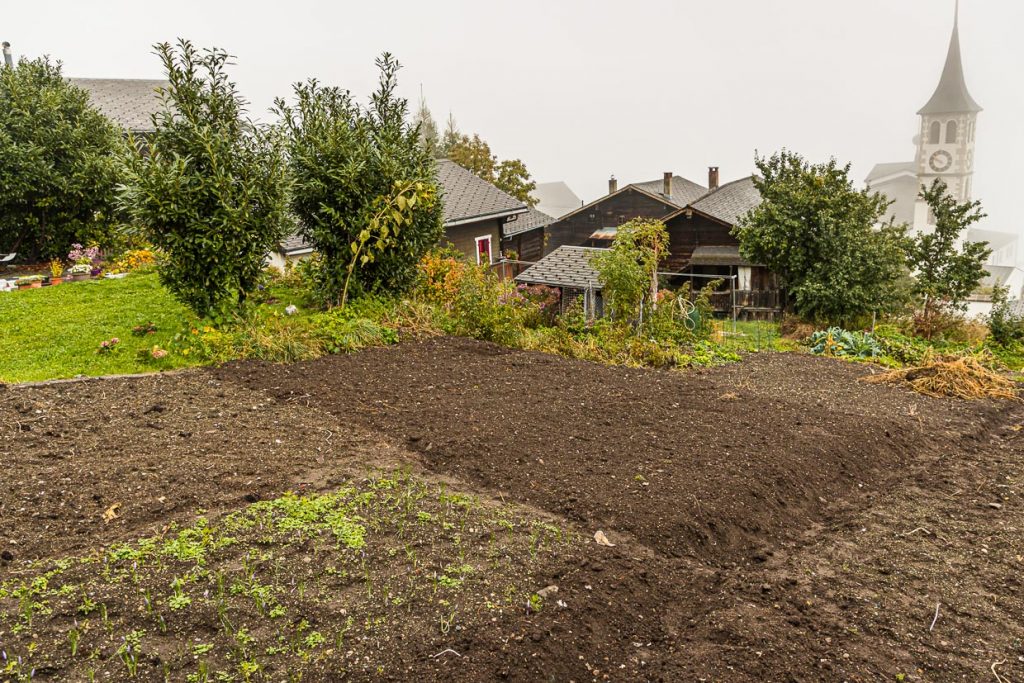
The saffron tradition in Mund dates back to the 15th century. But the origin is not exactly handed down. Presumably, medieval mercenaries smuggled a few of the precious saffron tubers from Spain back to their remote homeland, despite the threat of the death penalty.
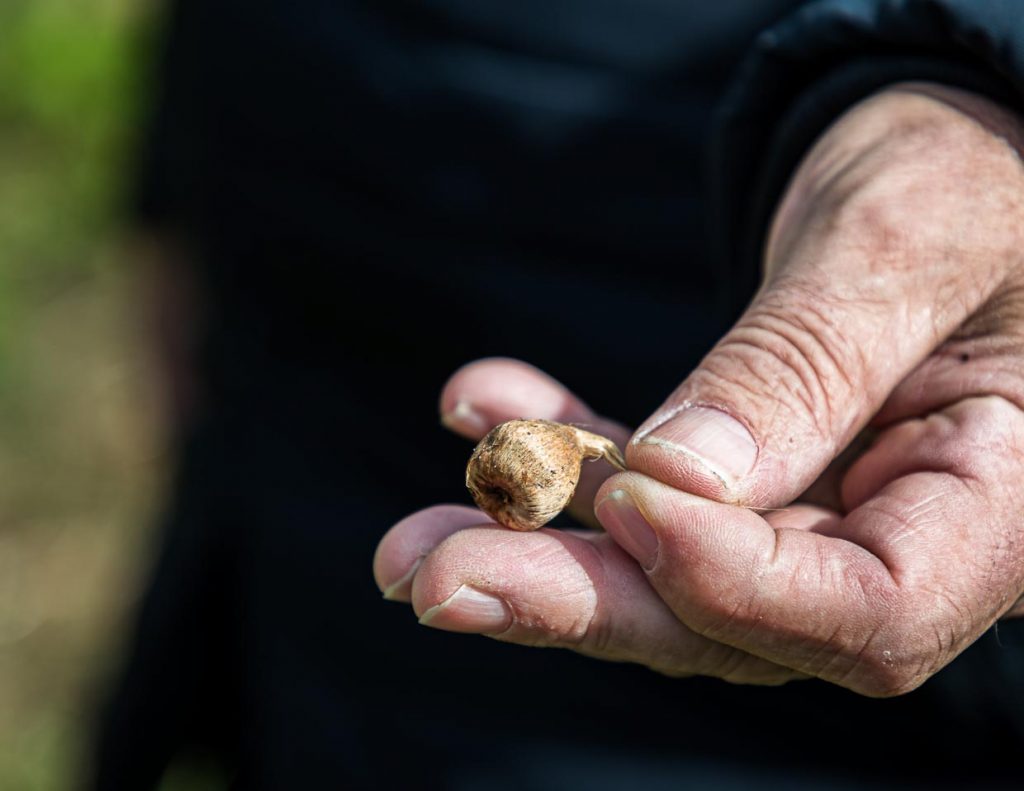
With saffron, the inhabitants, on whose fields rye is otherwise cultivated, have temporarily achieved modest prosperity. Until the middle of the last century, each family in Mund was able to support itself and live off what it grew on its land.
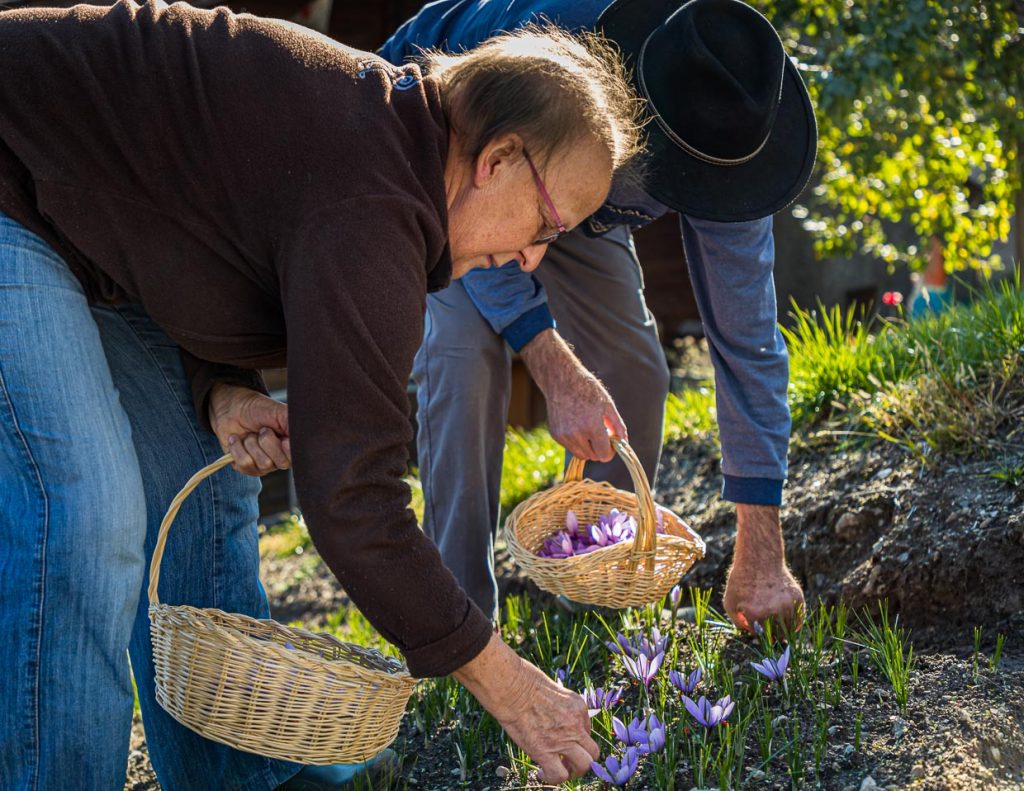
Mund produces excellent quality saffron, but the maximum harvest of the coveted spice is two to three kilograms per year. Even if the price approaches the price of gold in some years, saffron cultivation can only contribute a small part to the livelihood of saffron growers.
First came the cable car, then came the road
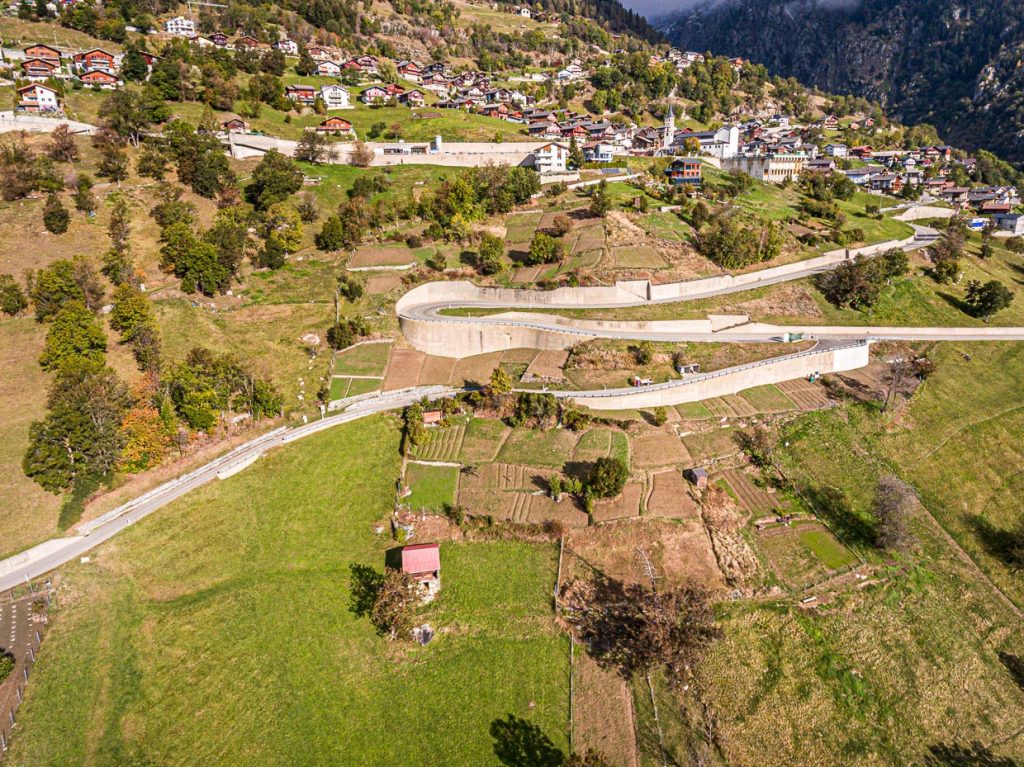
Just 70 years ago, Mund was cut off from the outside world in terms of transport. A cable car didn’t connect the village, located 1,200 meters above sea level, to the bustling Rhône Valley until 1951. It is also significant that the access road was built in 1978 through the middle of the valuable saffron fields. Of the former 60 fields, only three were still being cultivated when the road was built. Just in time before the final demise of the saffron tradition, an initiative was formed to save it.
The Saffron Guild
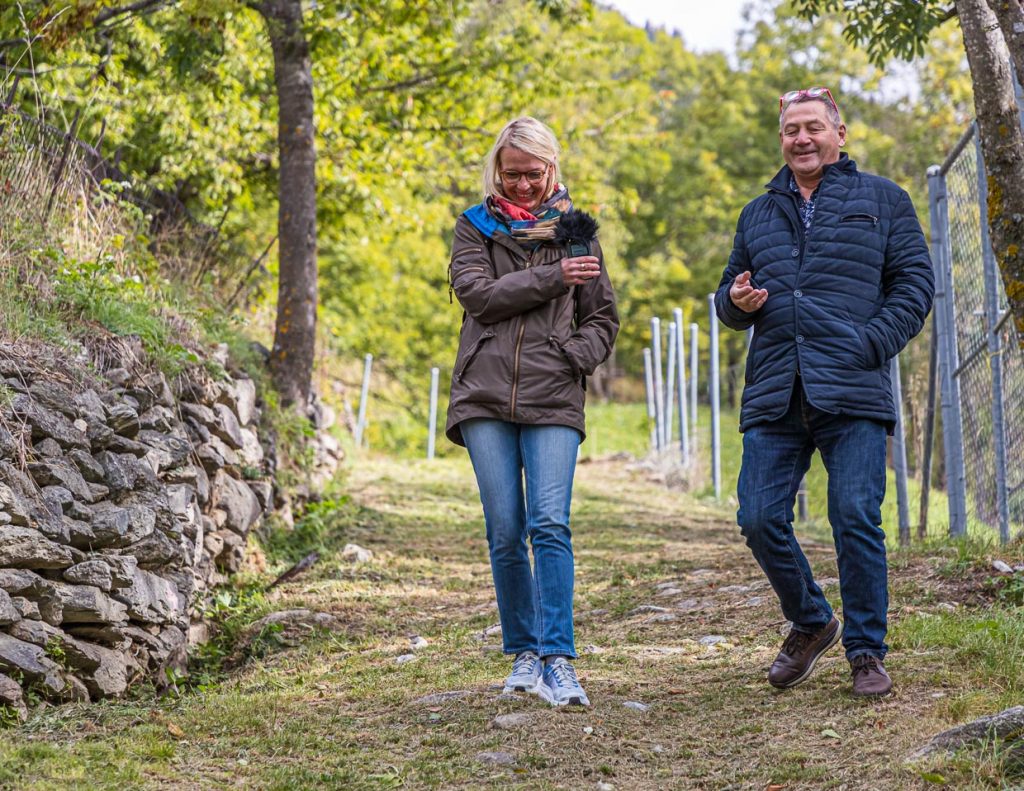
The renaissance of the Munder saffron began in 1979 with the founding of the Saffron Guild, which today has 184 members and also accepts interested parties who do not cultivate a saffron plot themselves. The focus is no longer on commercial interest, but on cultivating the local unique selling point.
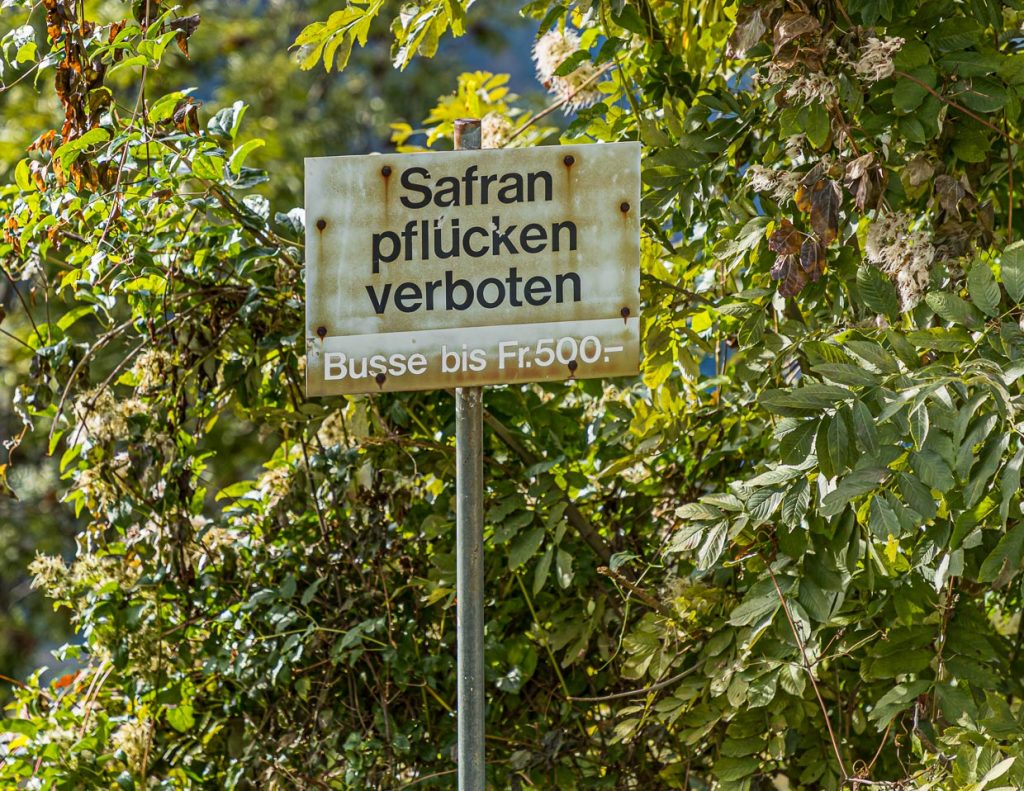
The fact that the saffron harvest takes place in the tourist low season is due to the whim of this lily plant. For it is not until the end of October, when winter dormancy has begun for all other plants, that the brief period of saffron flowering arrives. The climate in Valais, the altitude and the soil conditions contribute to the fact that the saffron can develop so well in mouth. The saffron tuber survives the summer at a depth of 20 centimeters. And it does especially well when rye grows in the same field in the soil layer above the tuber. Rye bread also has a long tradition in the canton of Valais. Even today, it is baked together by village communities in communal bakehouses.
Individual secrets of success
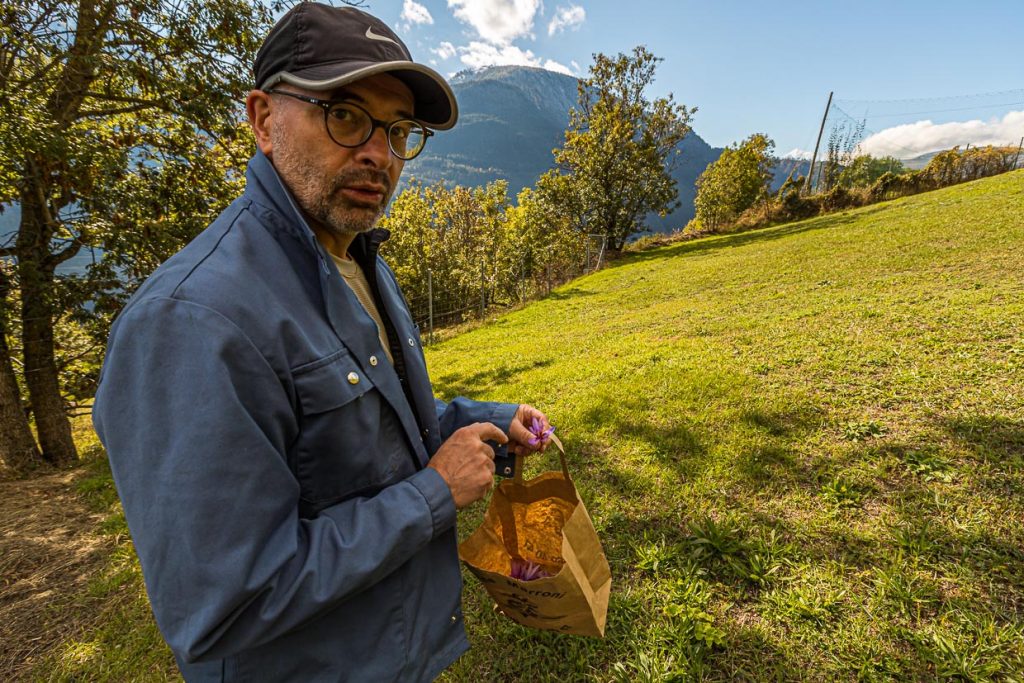
Today, 80 families in Mund are again working with saffron, and each seems to have its own secret recipe. Some swear by tilling the field above the tubers in summer, others like Elmar Pfammatter have had the best experience with the opposite. He is very satisfied with the harvest on his uncultivated field.
A few years ago, an elaborate irrigation system was installed for the Munder fields, but it is not used by those who swear by the natural climate with alternating rain, sunshine and balmy mists.
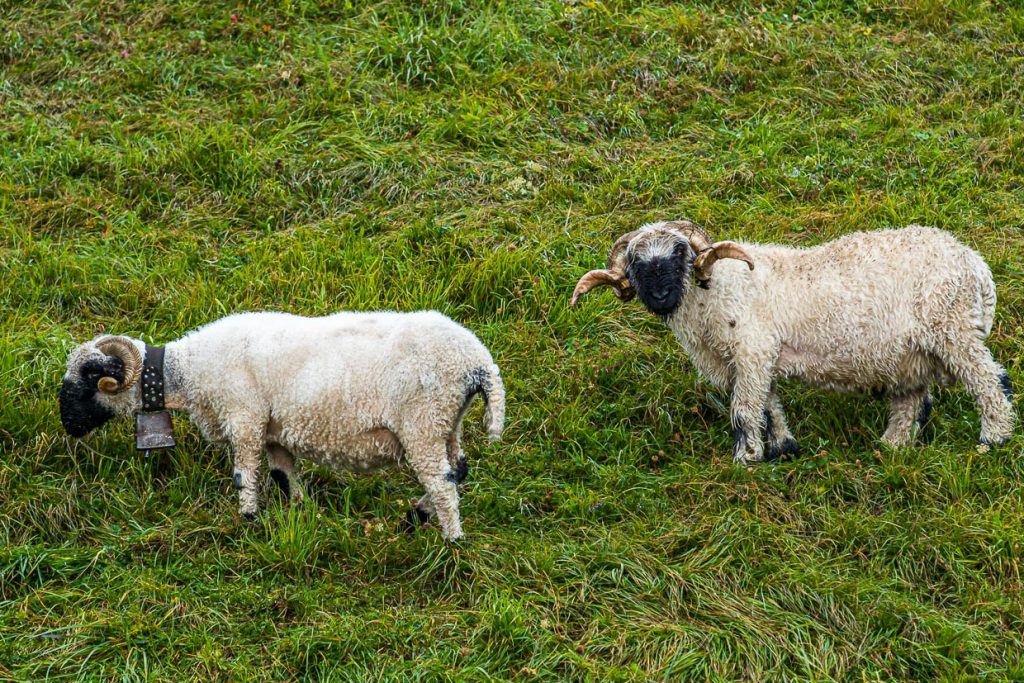
Also, that the tubers must be at least 20 centimeters deep in the ground no longer seems to be a law, because those not planted so deep bloom earlier and get more sun before harvest. Looking for the essential basic requirement for the saffron miracle, you think you have found it in the loose, fine sandy and lean soil. But then you meet saffron farmers who firmly believe in fertilization of any kind.
Saffron village of Mund – customs and conviviality
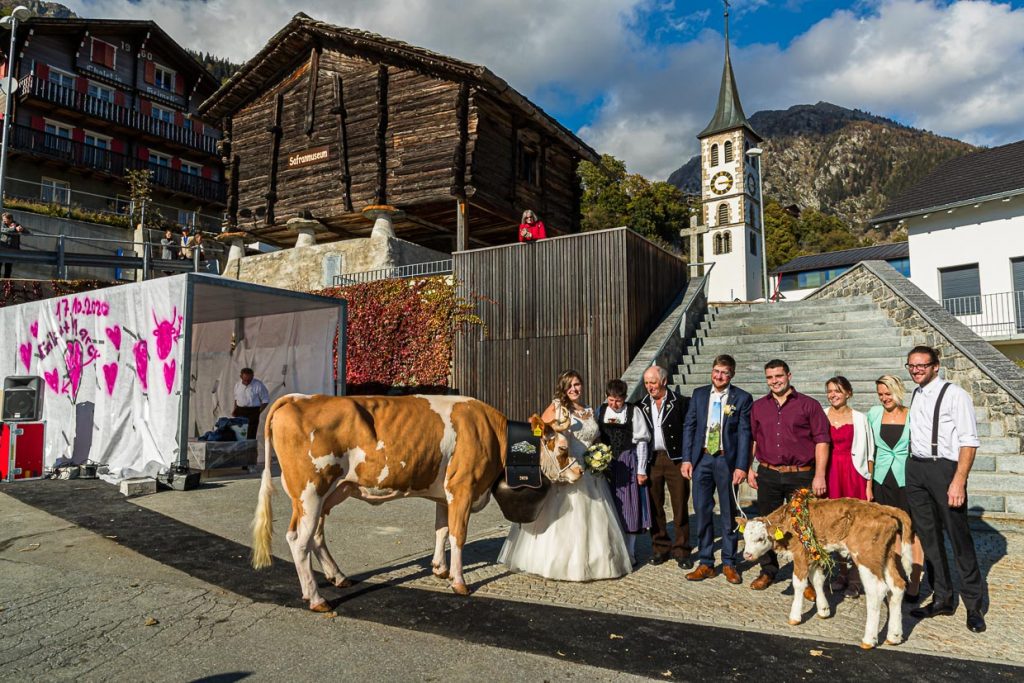
The small Saffron Museum is one of the oldest of these wooden houses typical of the Valais. After having served for a long time as a tithe house where farmers had to pay their taxes in kind, it now provides a beautiful setting for popular festivals and family celebrations. To protect against mice, it stands on stilts stacked with plate-like stones. The exhibition and knowledgeable guided tour provide a comprehensive basic knowledge of regional agriculture.
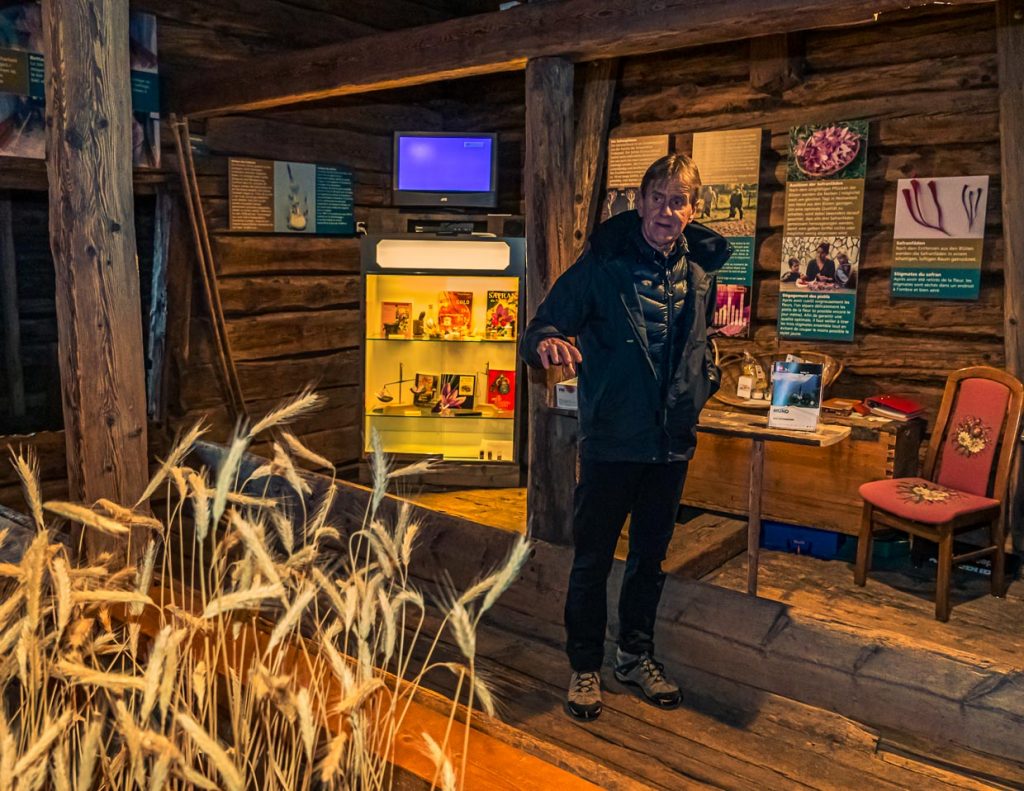
In the Saffron Museum and during a guided walk through the village, visitors vividly experience how well historical events can be classified with narrated stories. Remigius Pfaffen is active for both the Saffron Guild and the Foundation pro Safrandorf Mund. Only recently, the foundation acquired the home of the photographer Fridolin Imstepf and made it accessible to the public along with his historical photo collection.
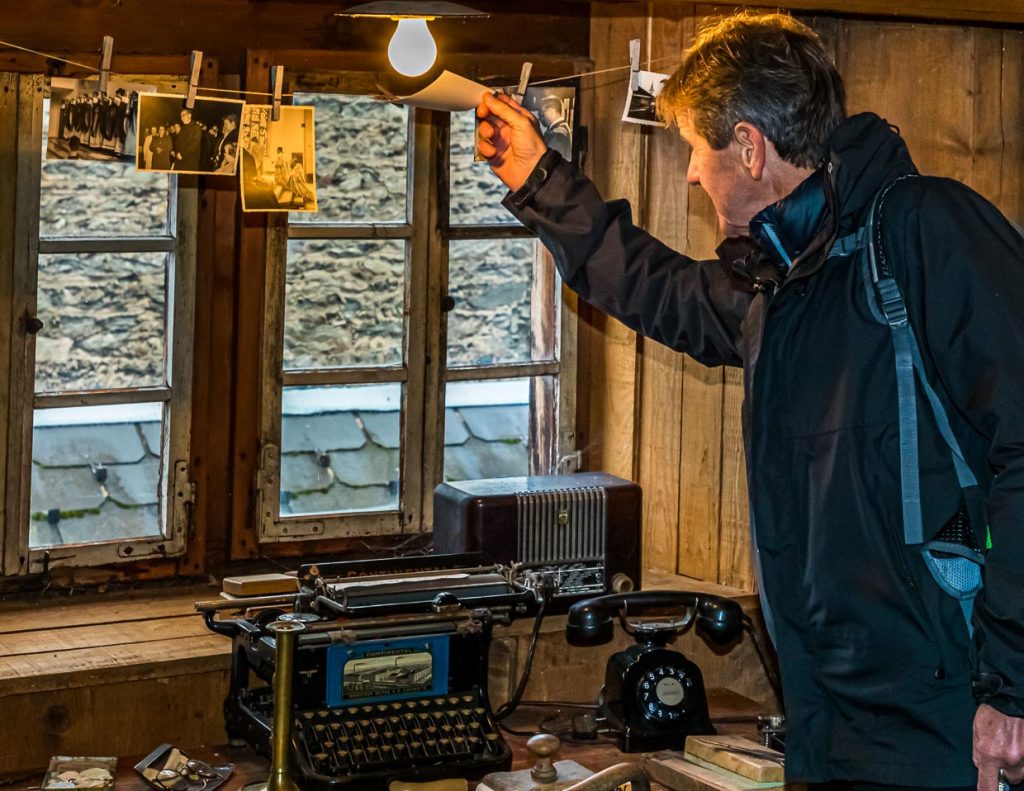
Saffron – home production
When the flowers are harvested in the saffron fields, they are bent in such a way that no traction is exerted on the tuber, which sits deep in the ground. They are taken home in small baskets for further processing.
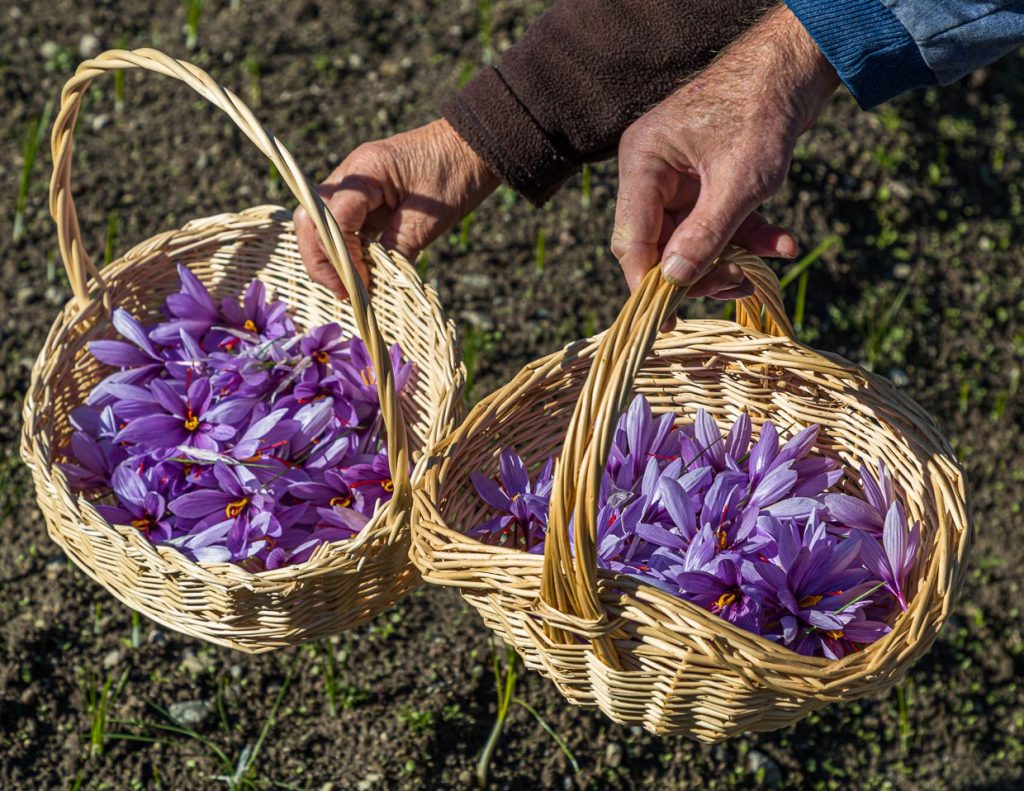
Three red saffron threads are plucked from each flower. Too bad that the colorful rest usually ends up on the compost.
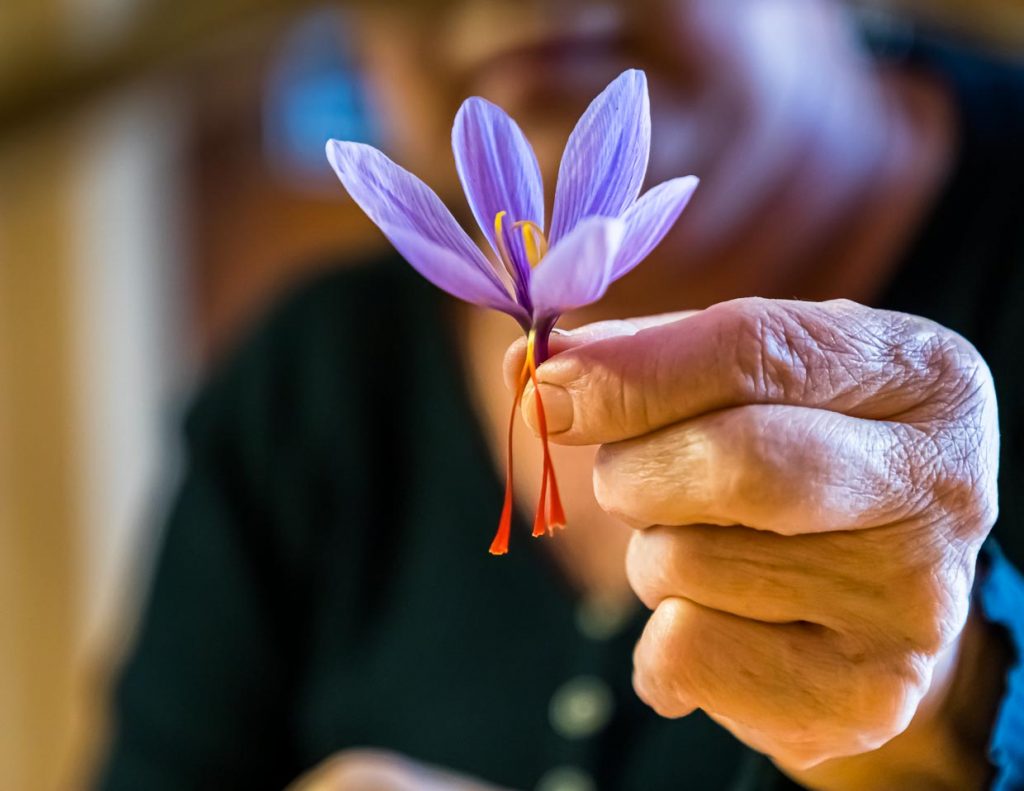
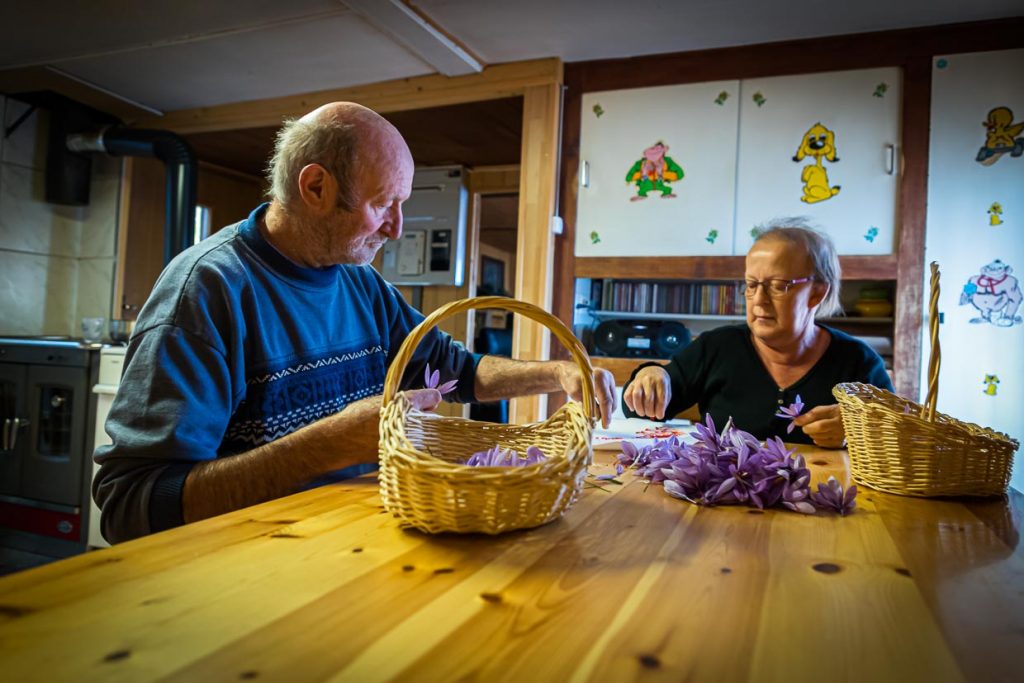
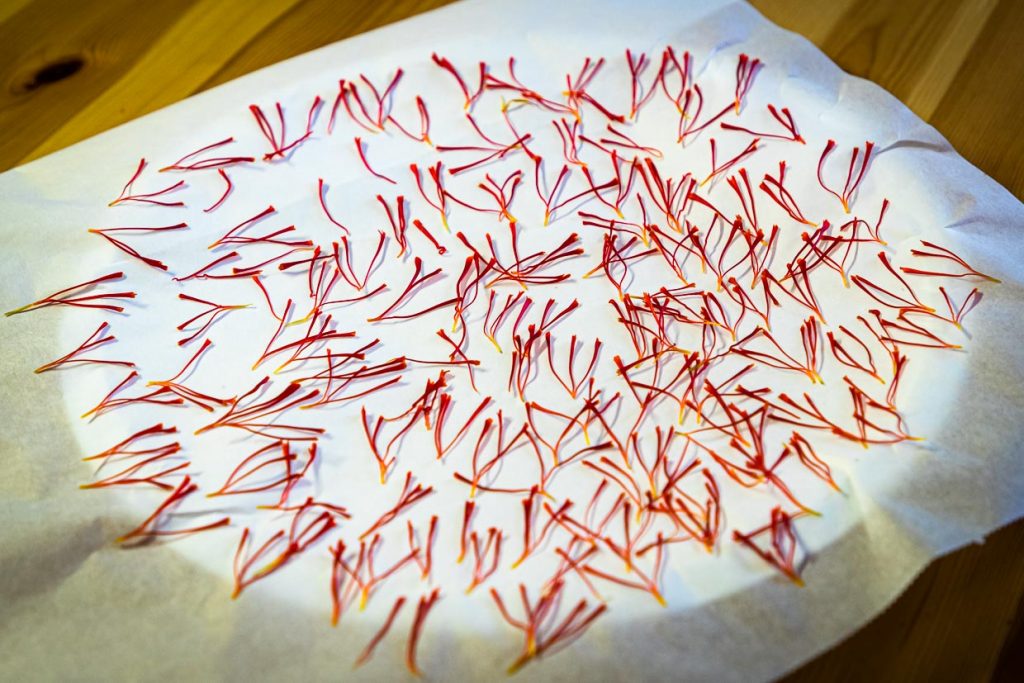
Munder saffron – Expensive and hard to get
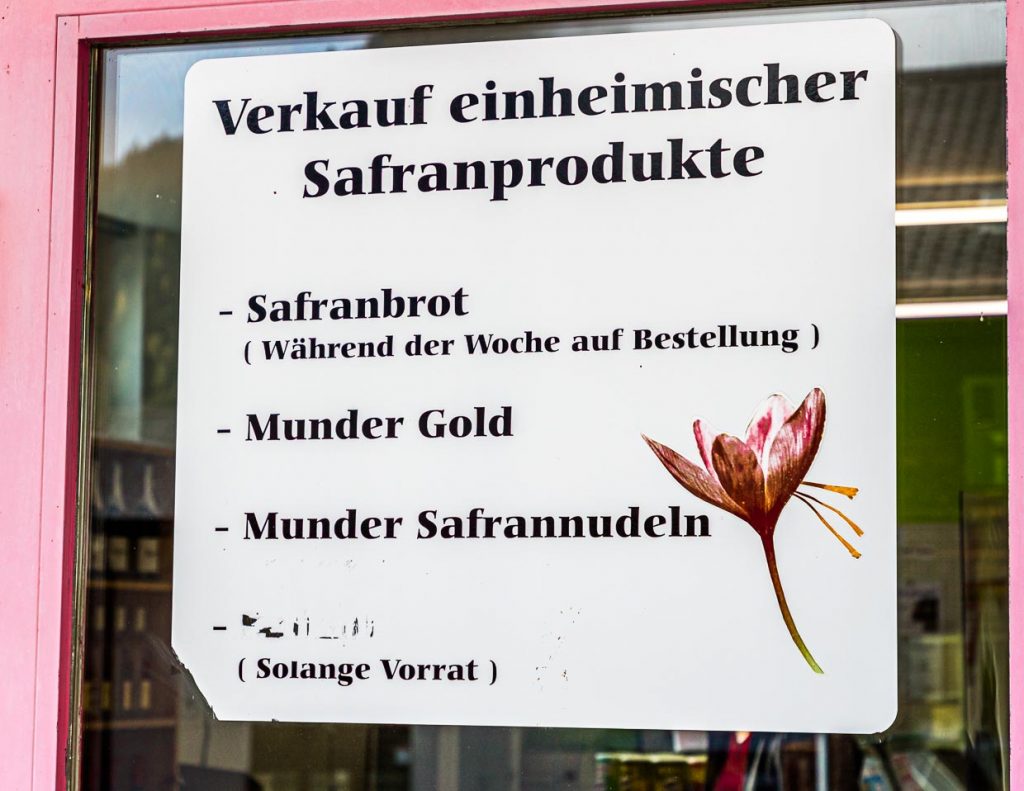
Mund has always produced excellent quality saffron, most of which is consumed by local restaurants. Even though the price approaches the price of gold in some years, saffron sells out quickly here.
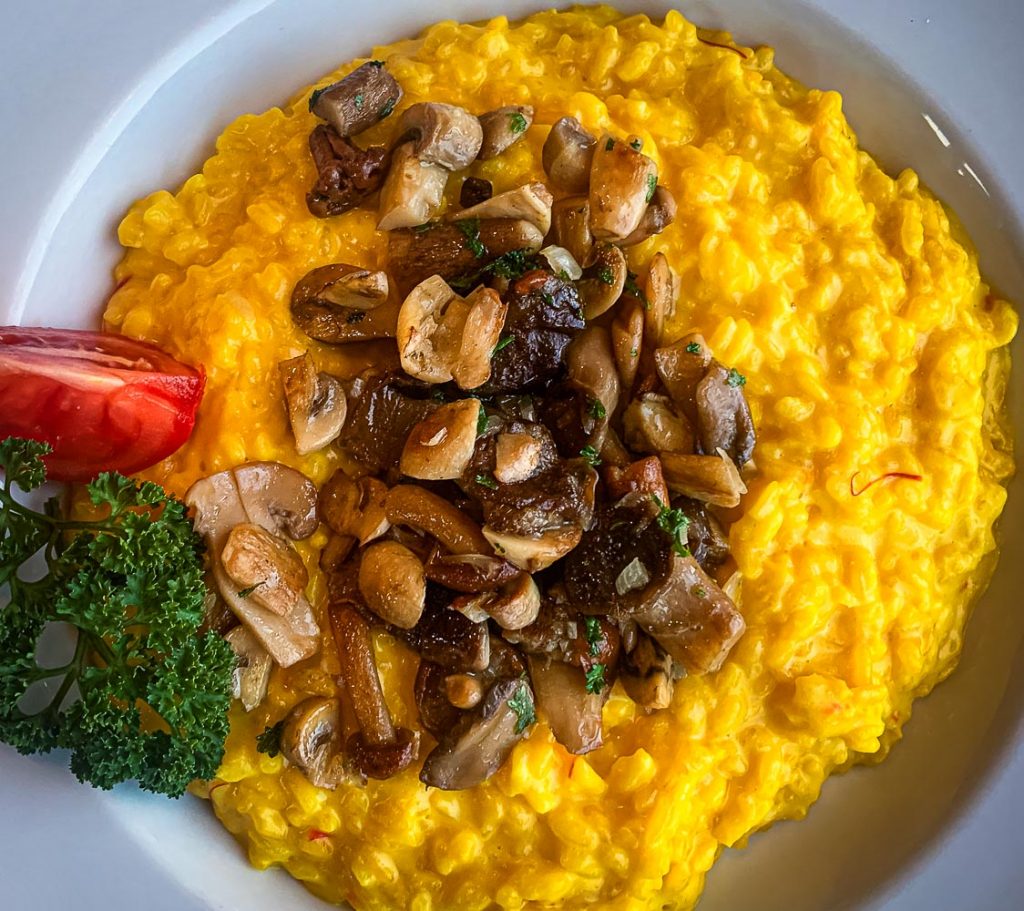
Print publication
The research trip was partly supported by Switzerland Tourism

